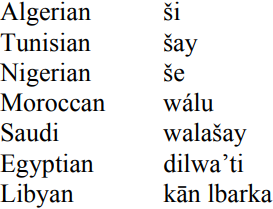
Languages as “dialects”
 المؤلف:
P. John McWhorter
المؤلف:
P. John McWhorter
 المصدر:
The Story of Human Language
المصدر:
The Story of Human Language
 الجزء والصفحة:
13-15
الجزء والصفحة:
13-15
 2024-01-15
2024-01-15
 835
835
Languages as “dialects”
In other cases, separate languages are treated as dialects of one because they are all spoken in one nation or by the same cultural group.
A. Chinese. As we have seen, Chinese “dialects,” such as Mandarin and Cantonese, are actually as different as the Romance languages are from one another.
Obviously these are separate languages, and the five other main Chinese “dialects” are just as different from one another, such as Taiwanese and Shanghainese. But all of the languages are written with the same system, which uses symbols for whole words instead of for sounds. This means that the languages look quite similar to one another on the page, since, for example, the word for man is the same symbol in all of the languages even though the spoken word is quite different. Then, the sense that all of the languages’ speakers have of being united as “Chinese” completes the impression that there is a single Chinese “language.”
B. Arabic. The varieties of what is called “Arabic” in various nations are as different as the Romance languages as well.
nothing in Arabic “dialects”:

But these languages are largely used only for speaking. Modern Standard Arabic, based on the language of the Koran, is used in writing and formal language in most of these countries, and the spoken variety is considered a bastard version of the standard rather than as a separate “language” in its own right. Hence, there is a sense that one language, “Arabic,” is spoken across the Arab world, rather than several different languages.
 الاكثر قراءة في Linguistics fields
الاكثر قراءة في Linguistics fields
 اخر الاخبار
اخر الاخبار
اخبار العتبة العباسية المقدسة


